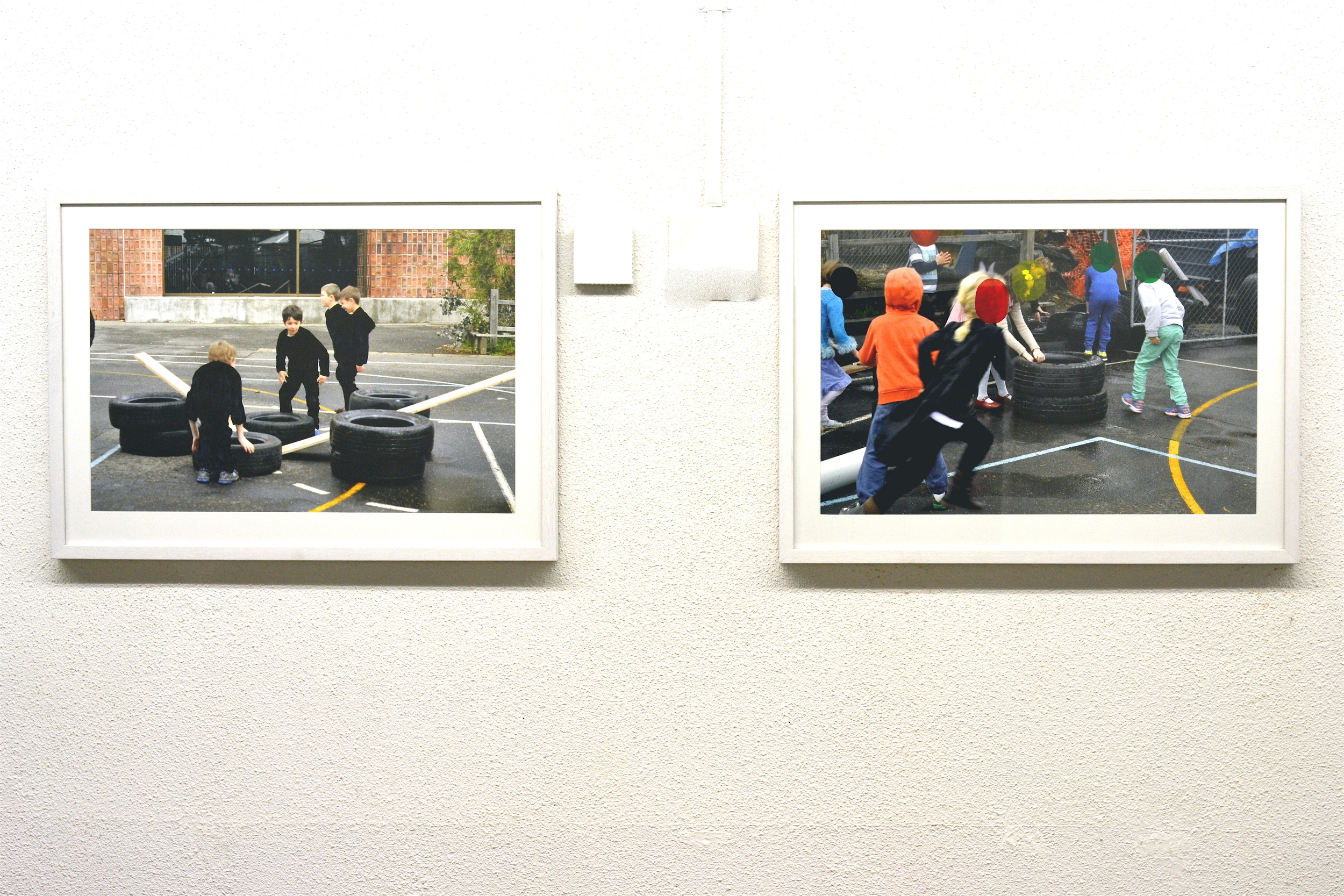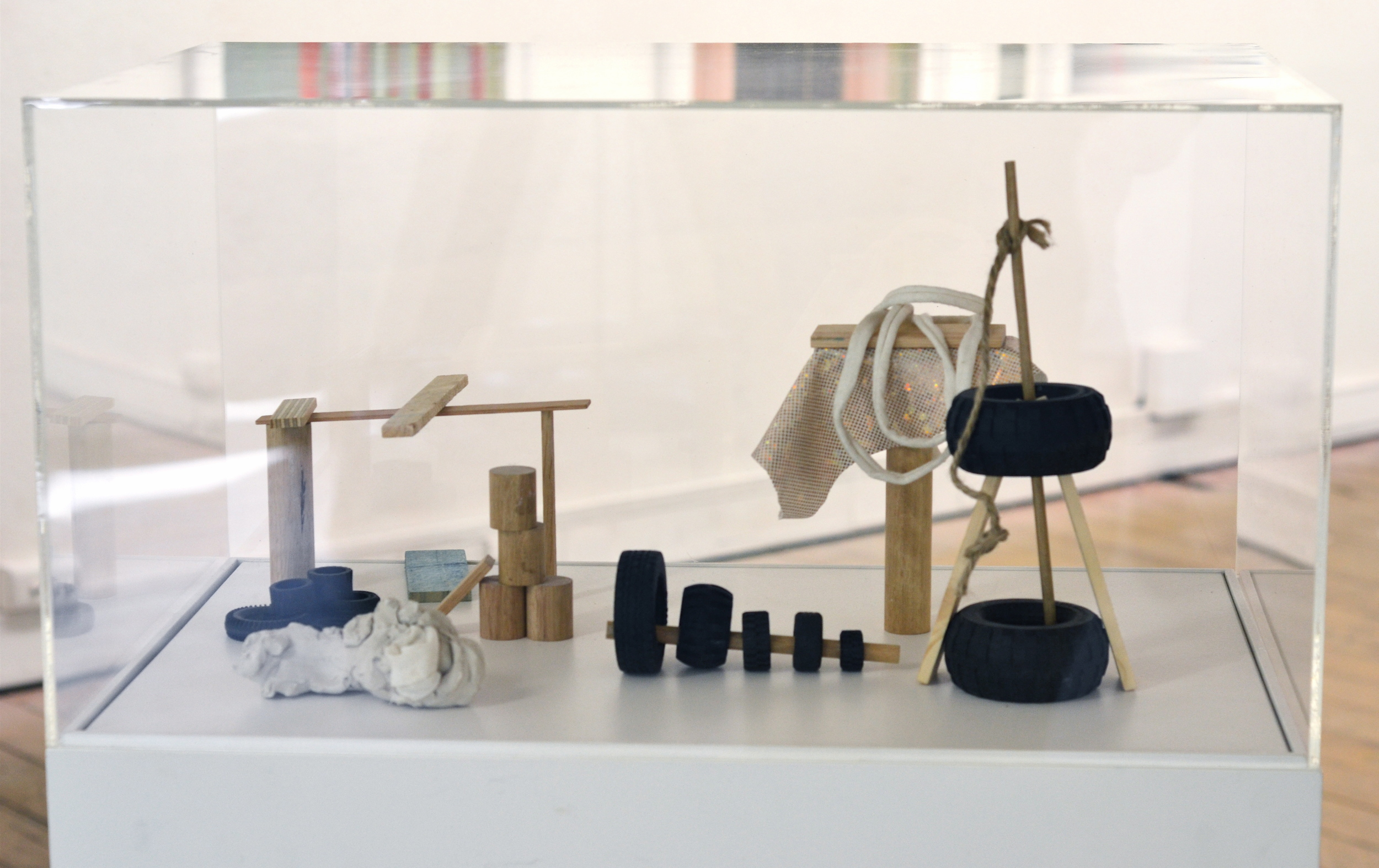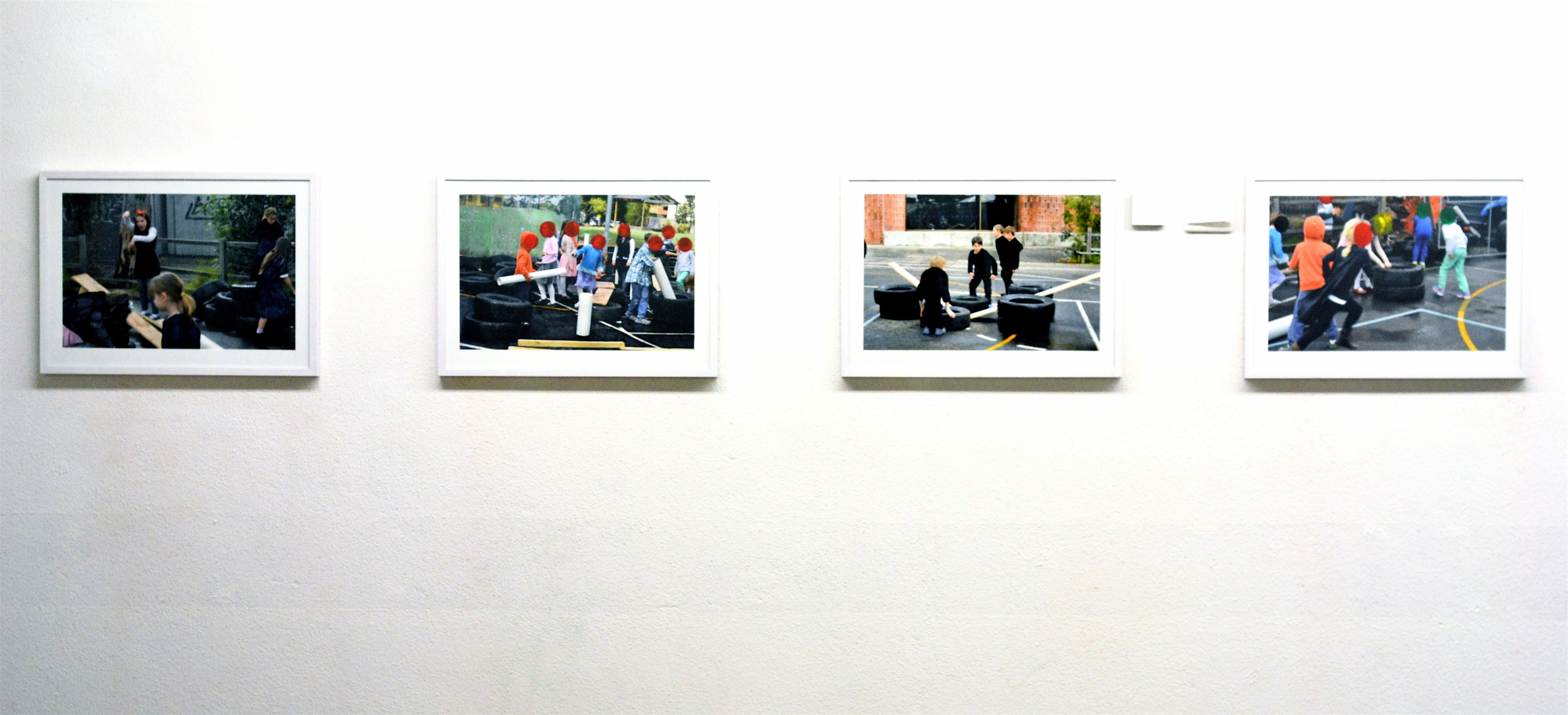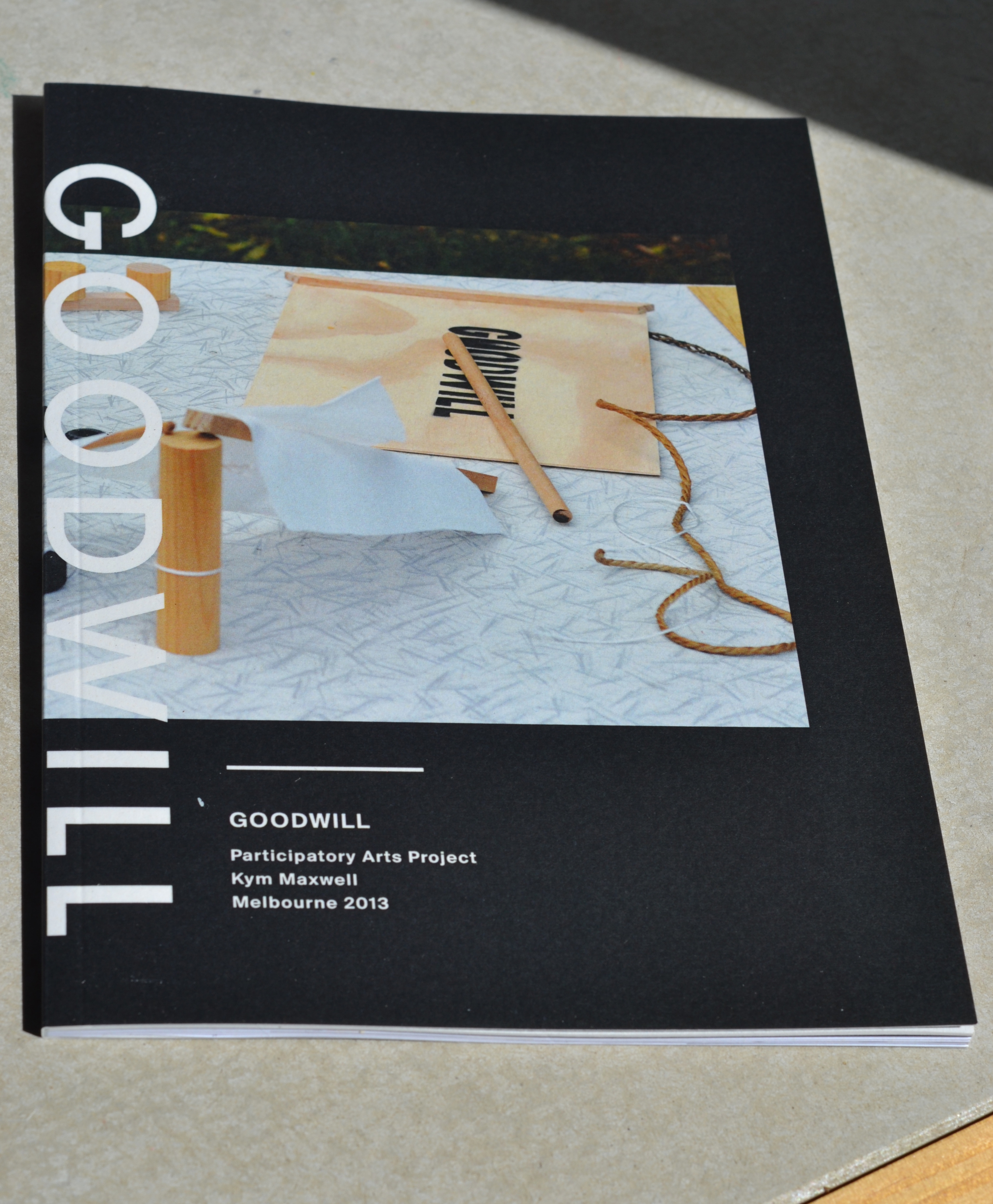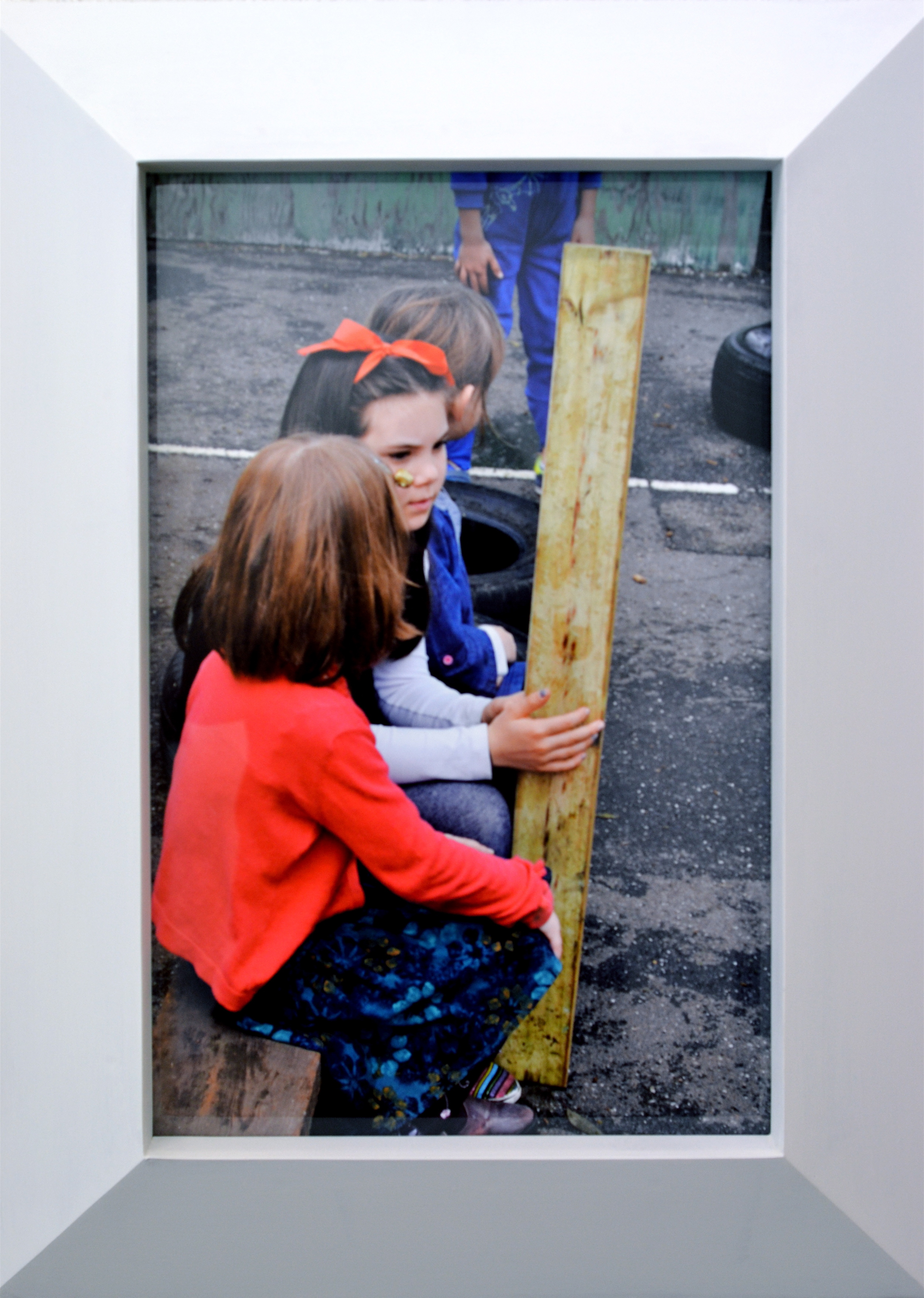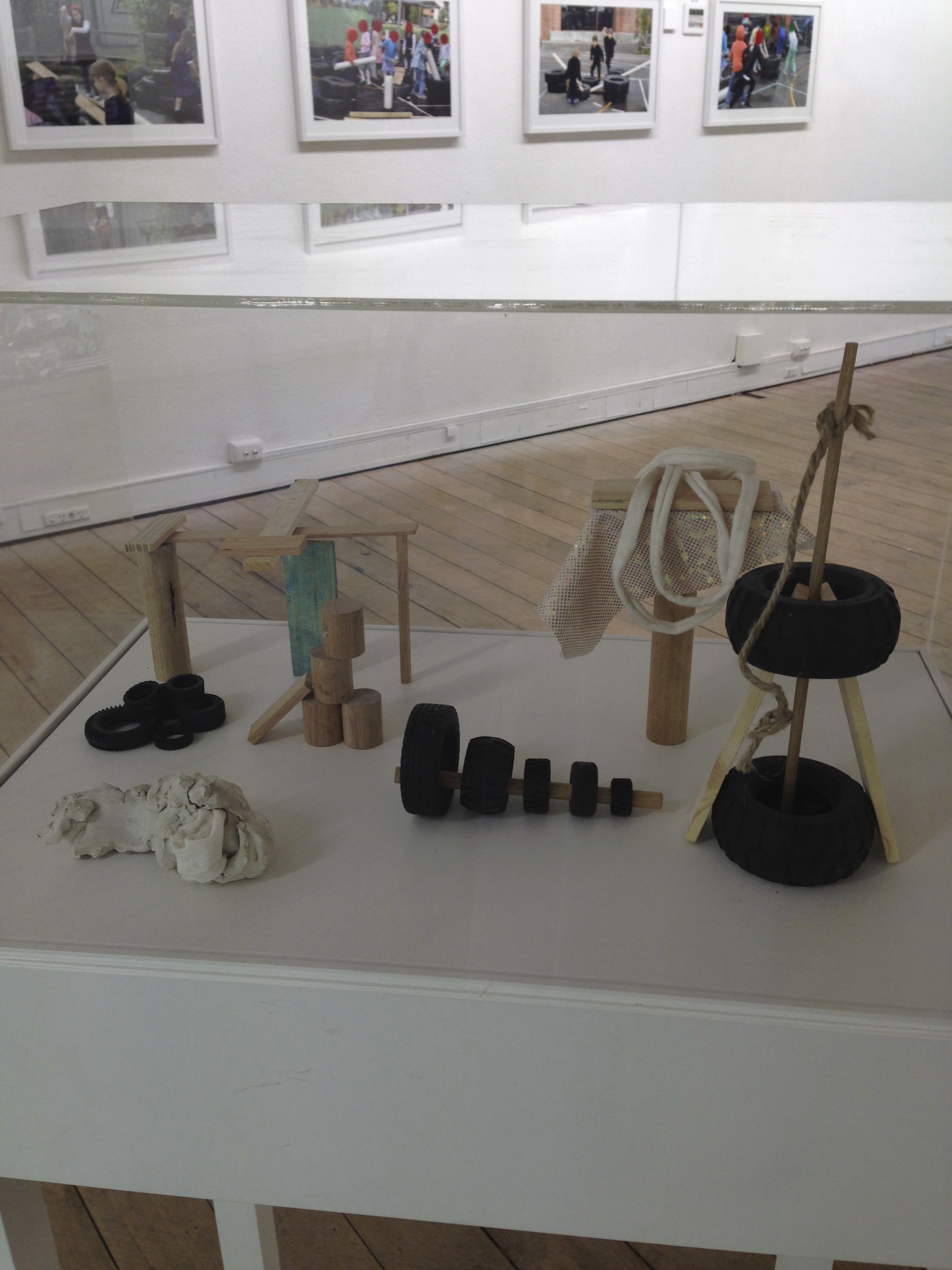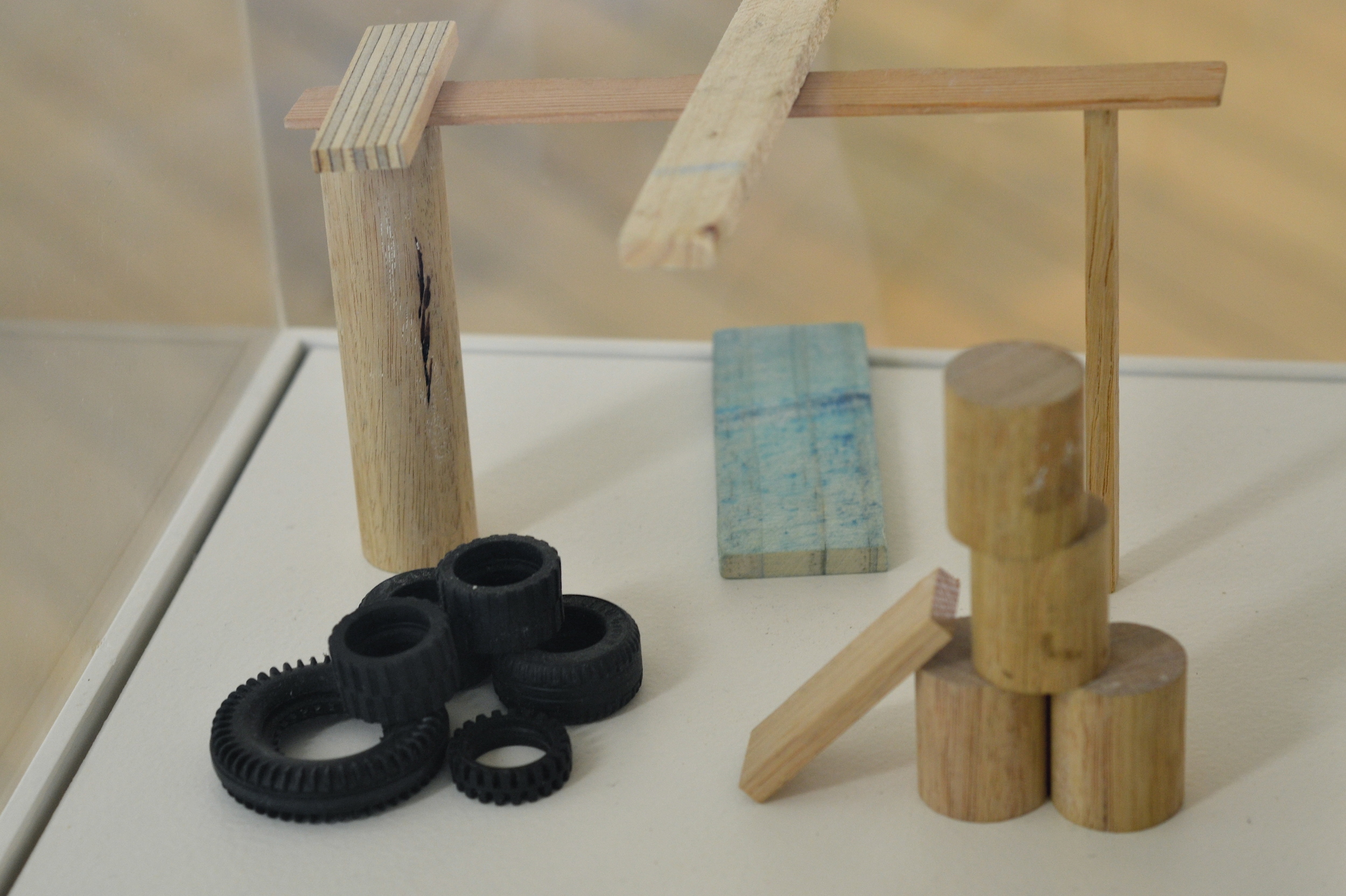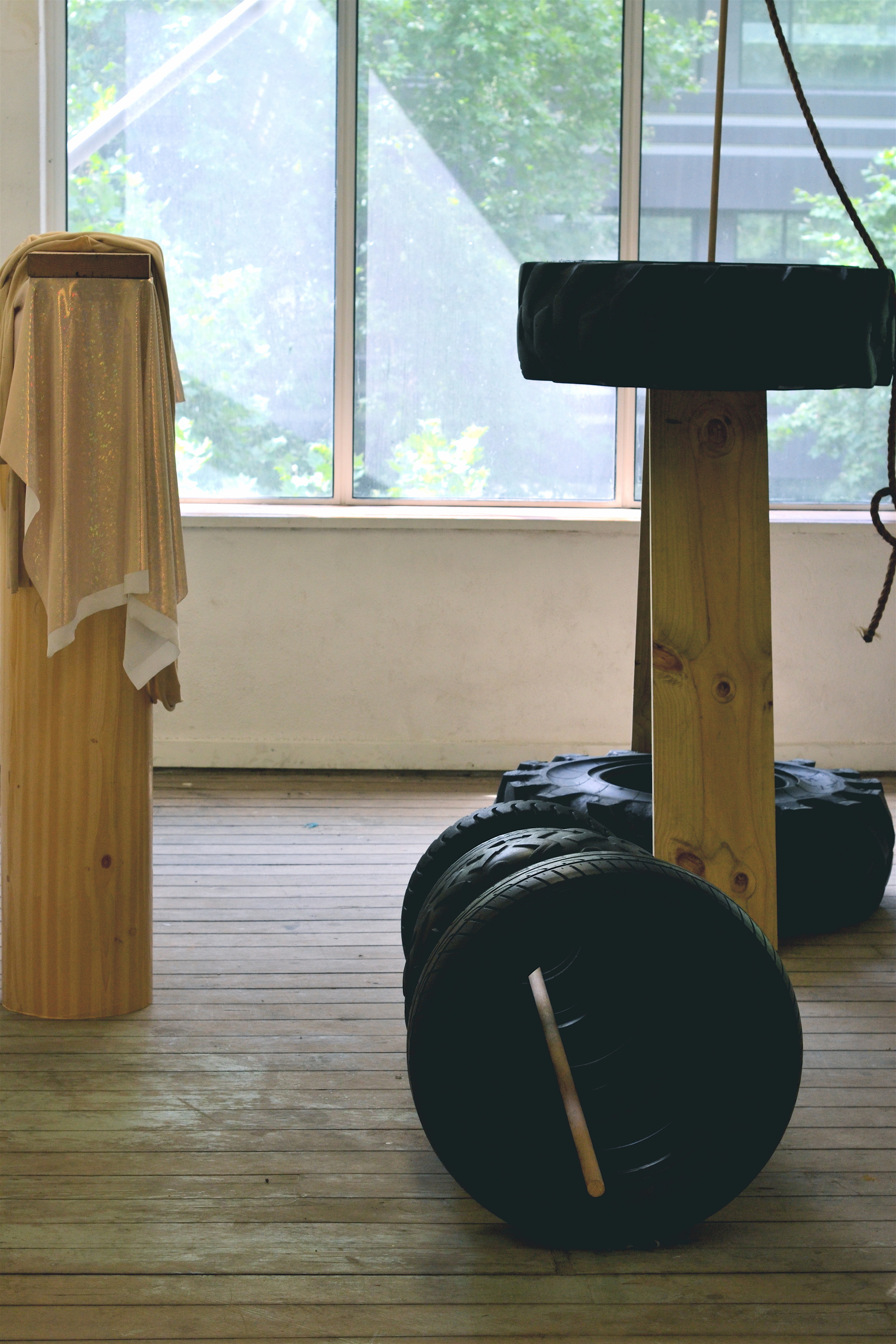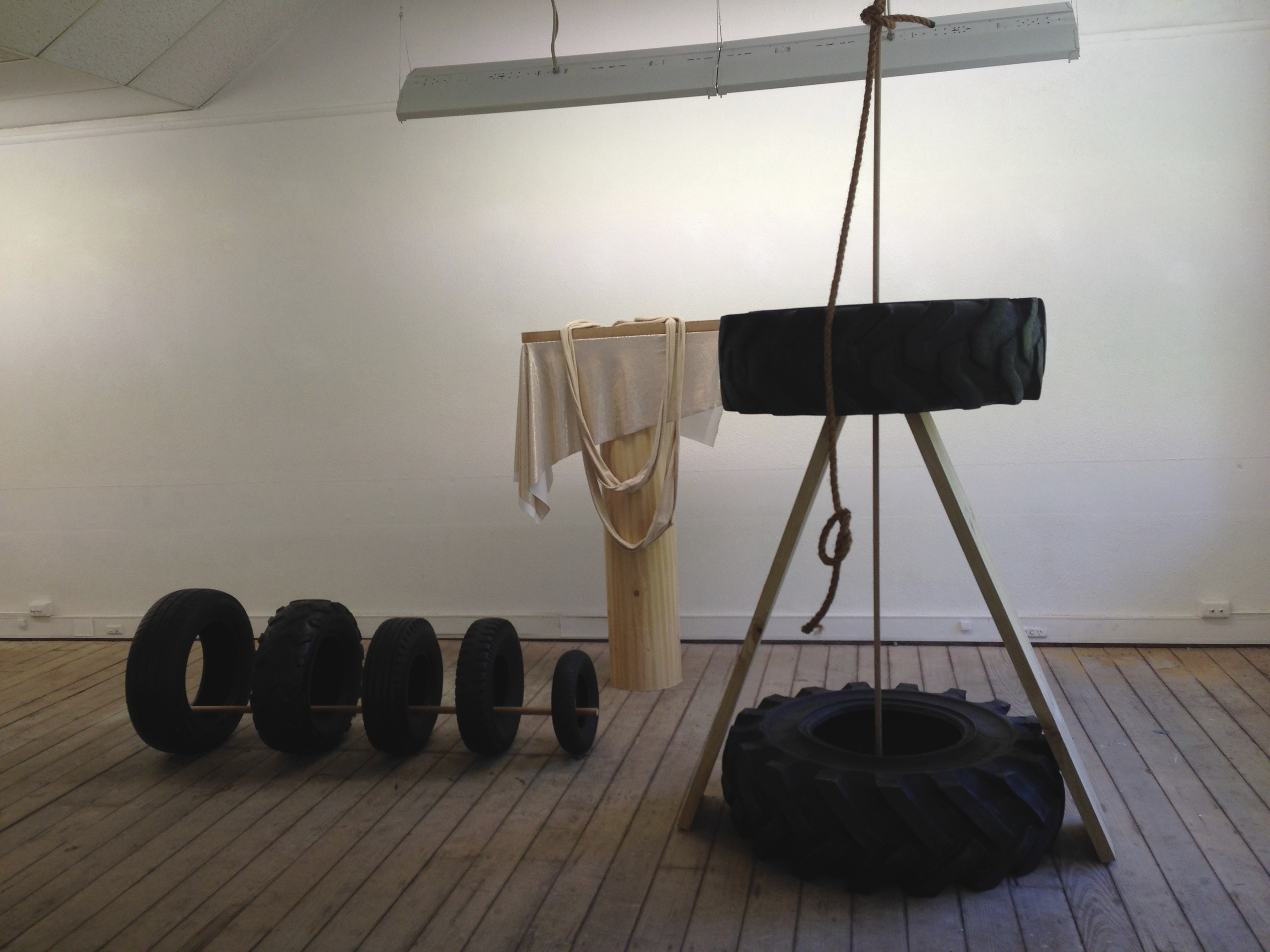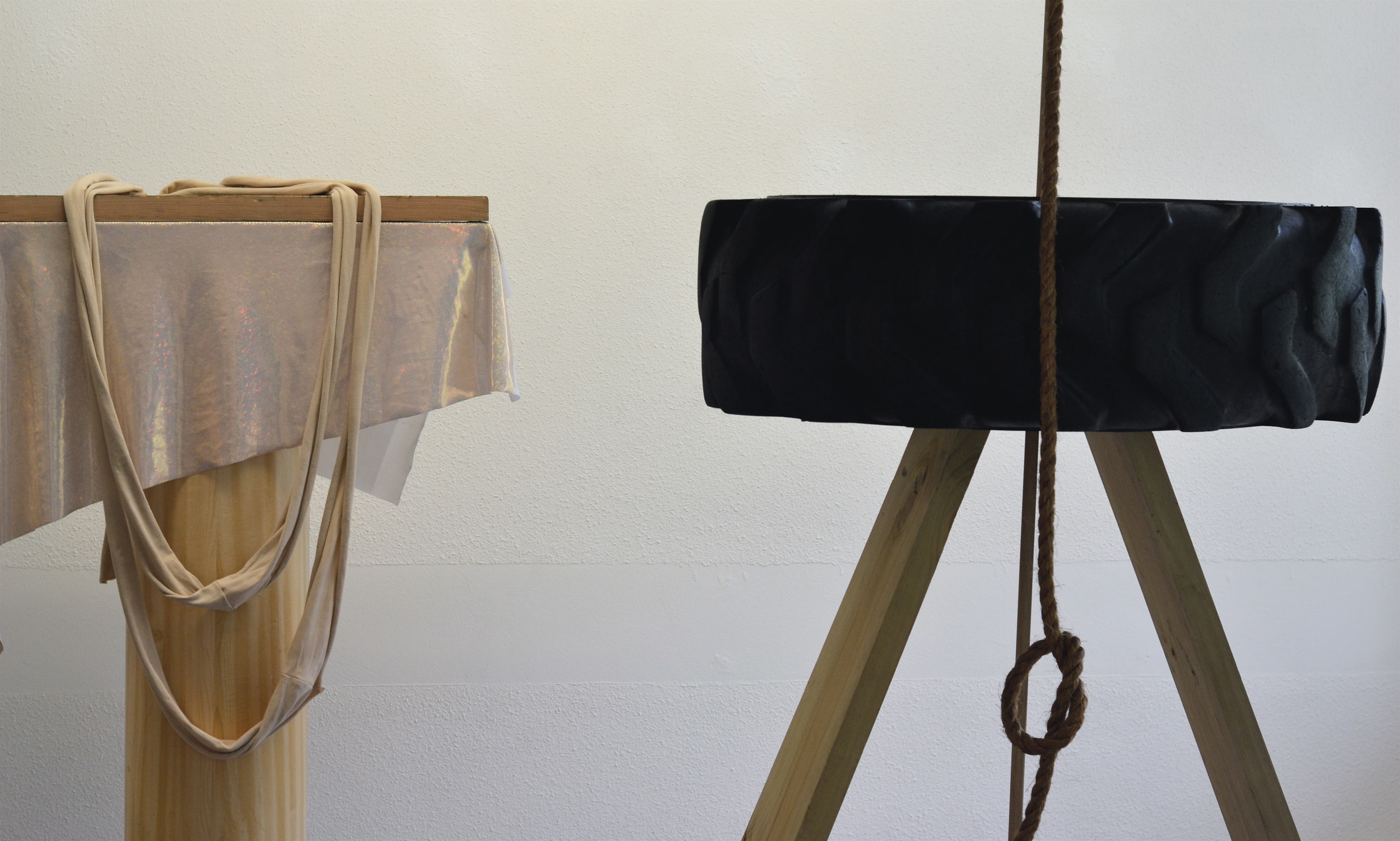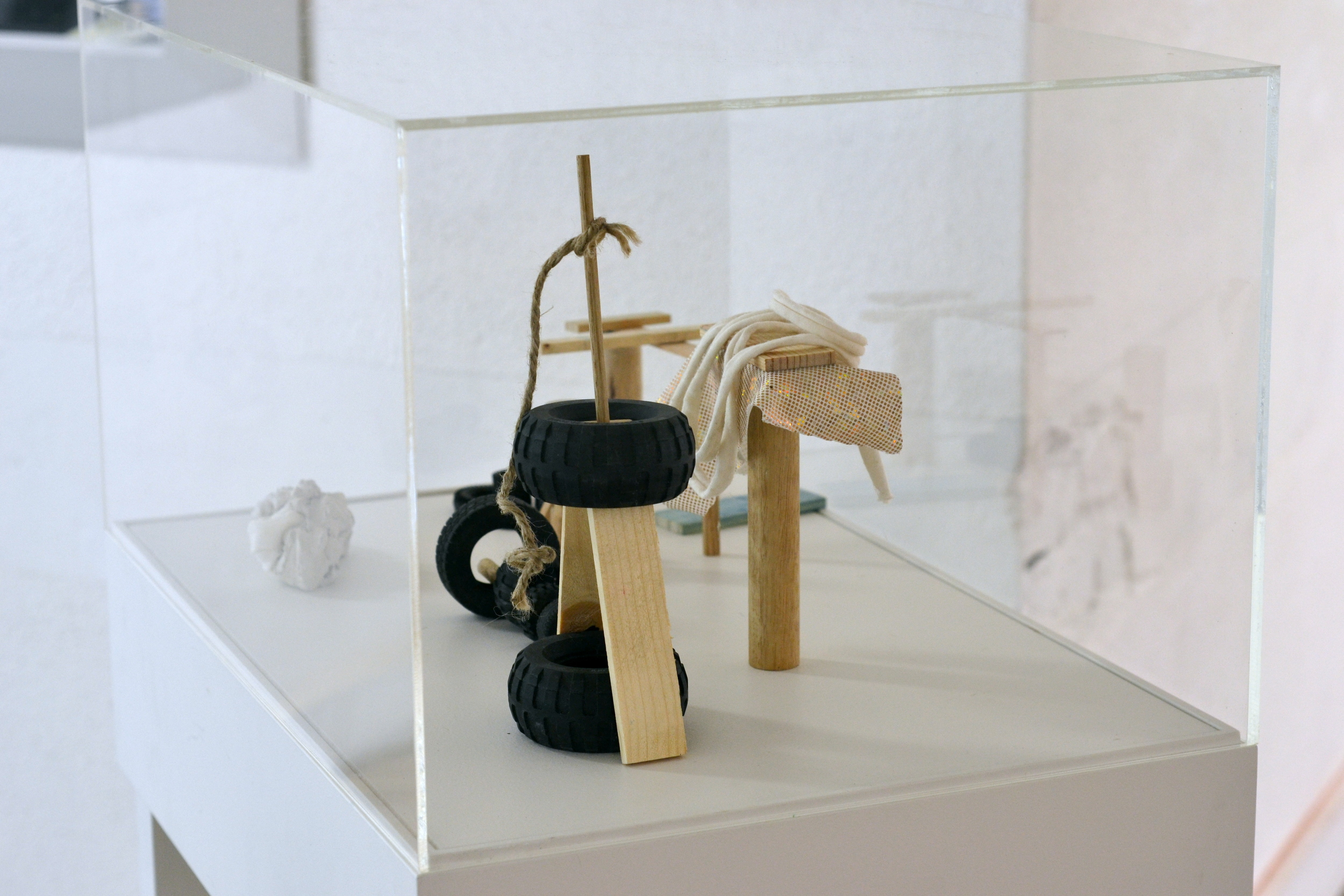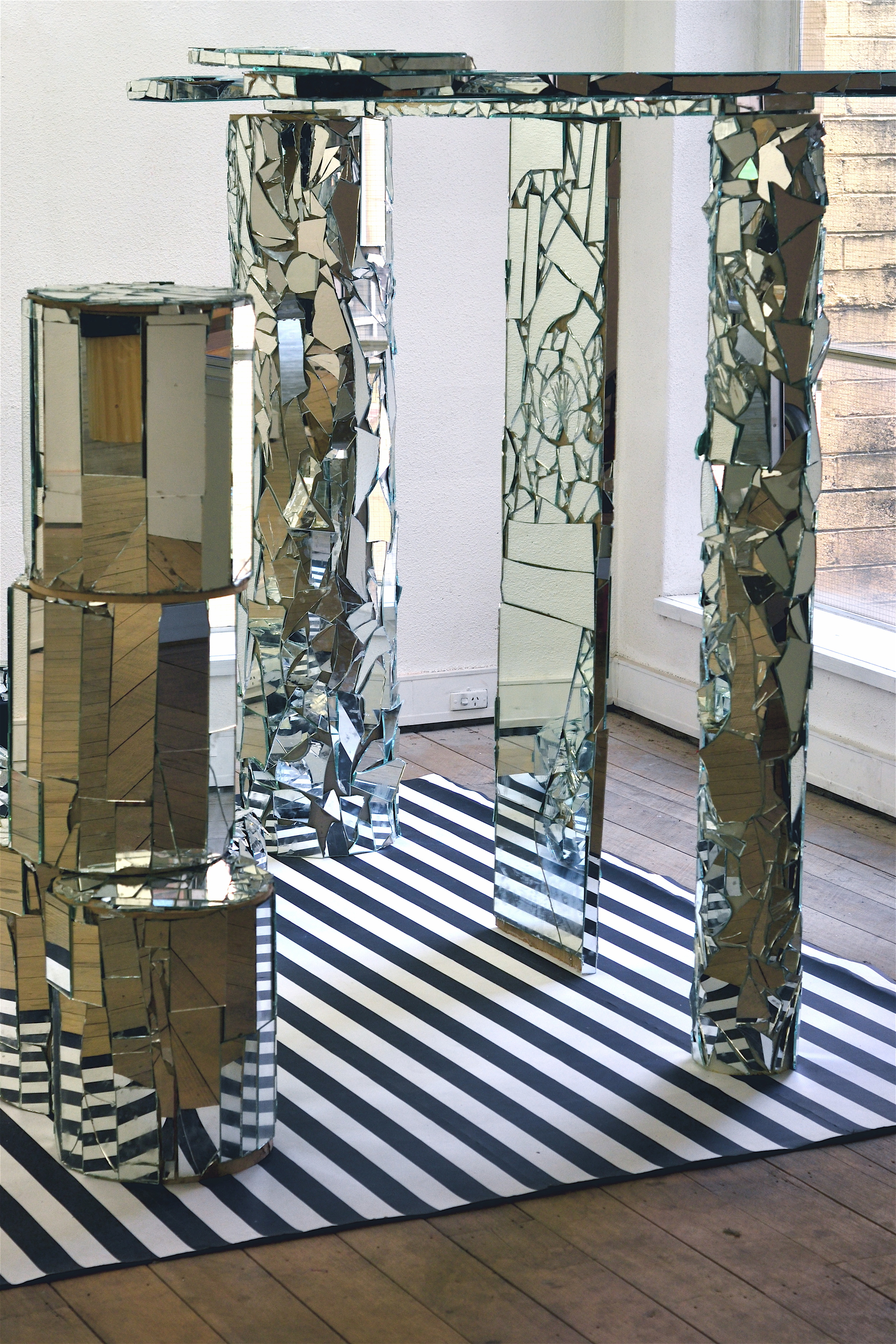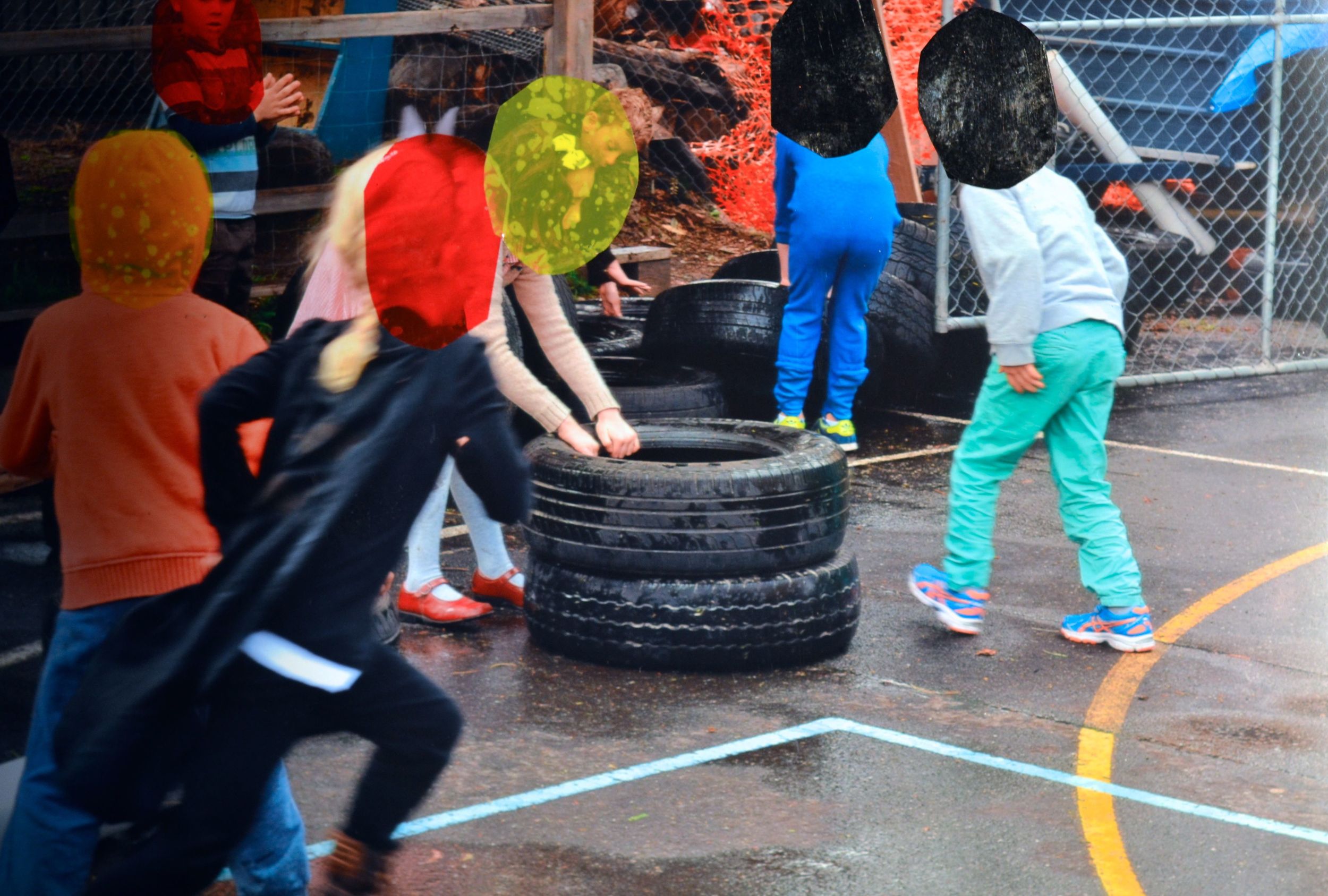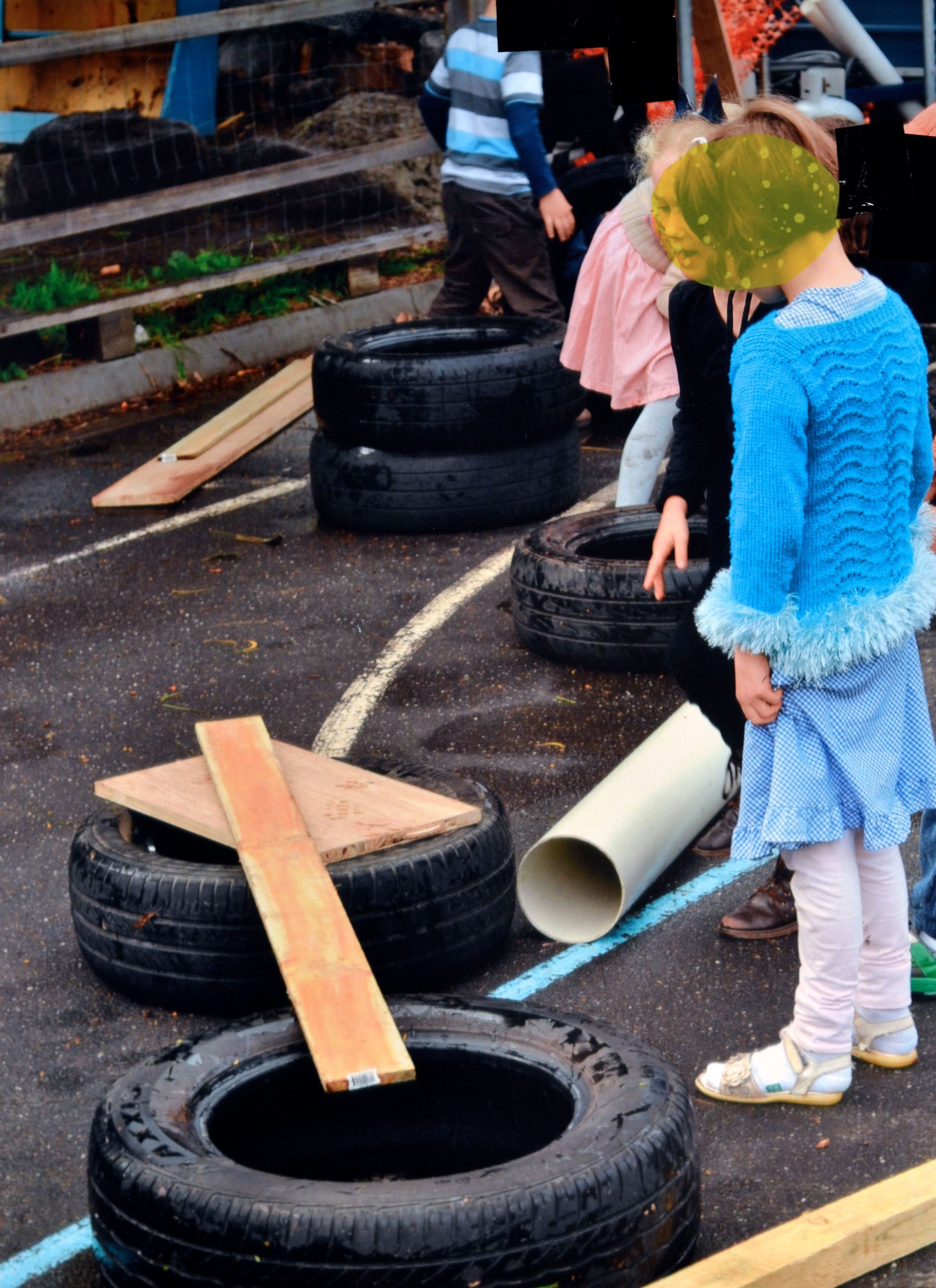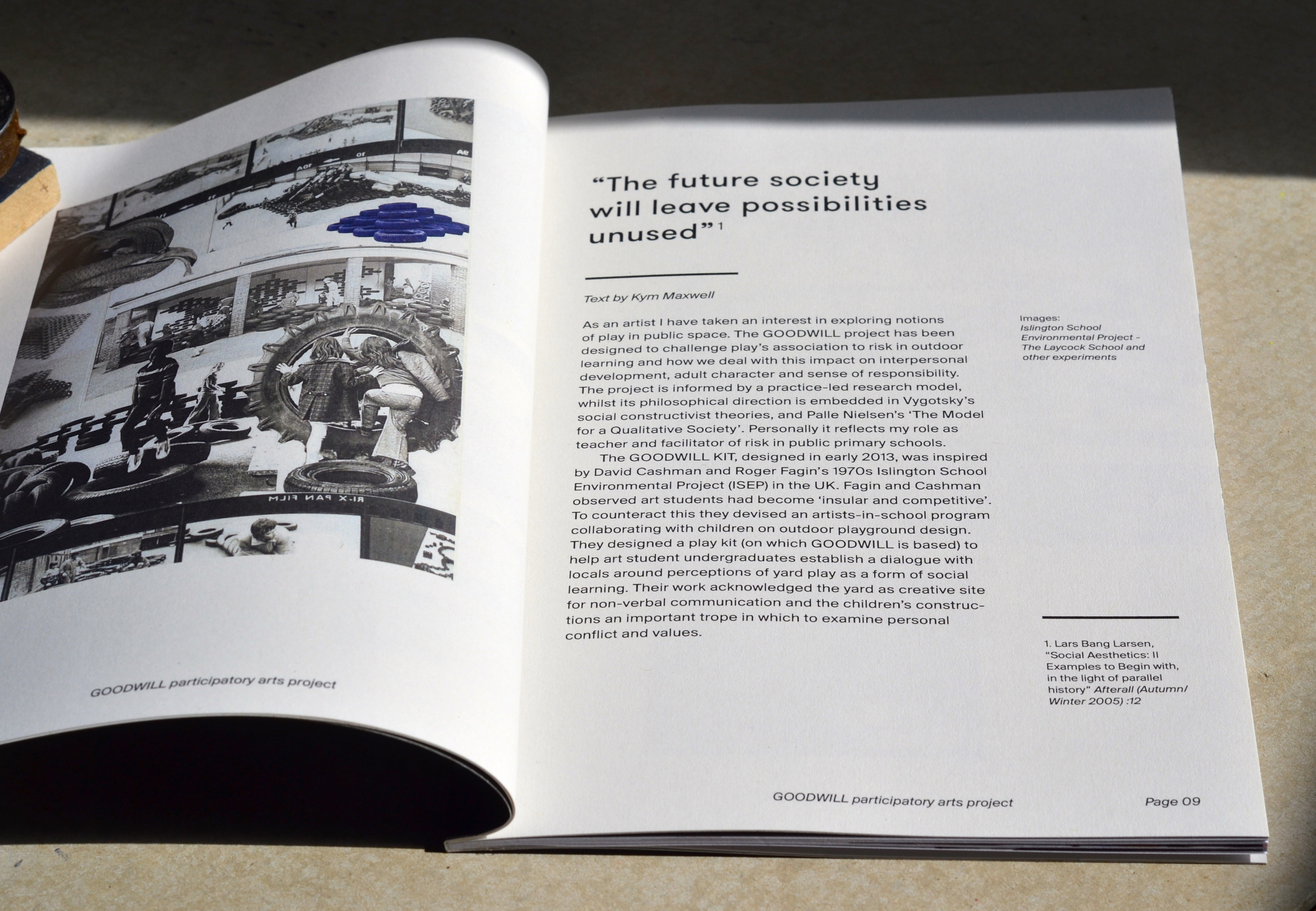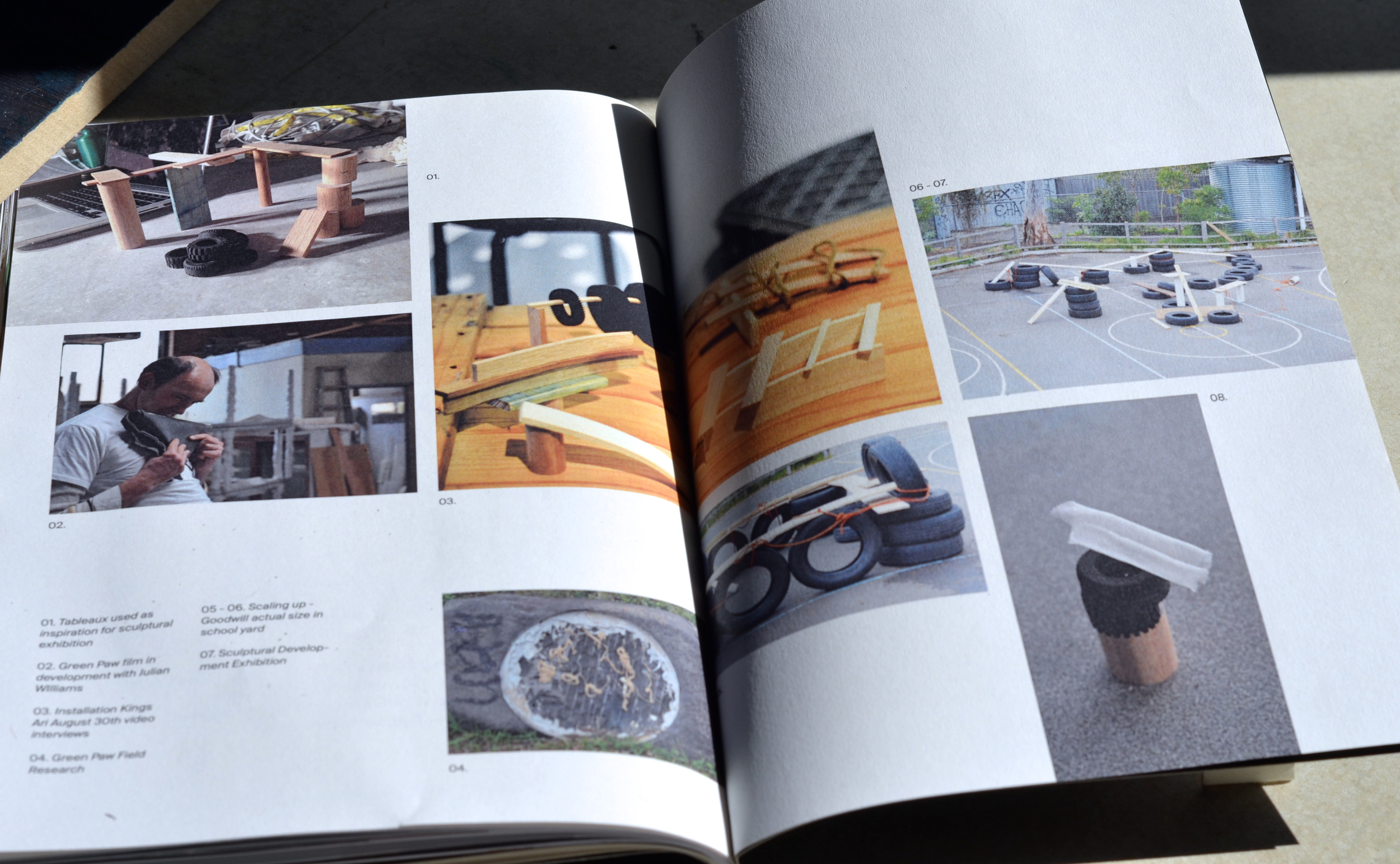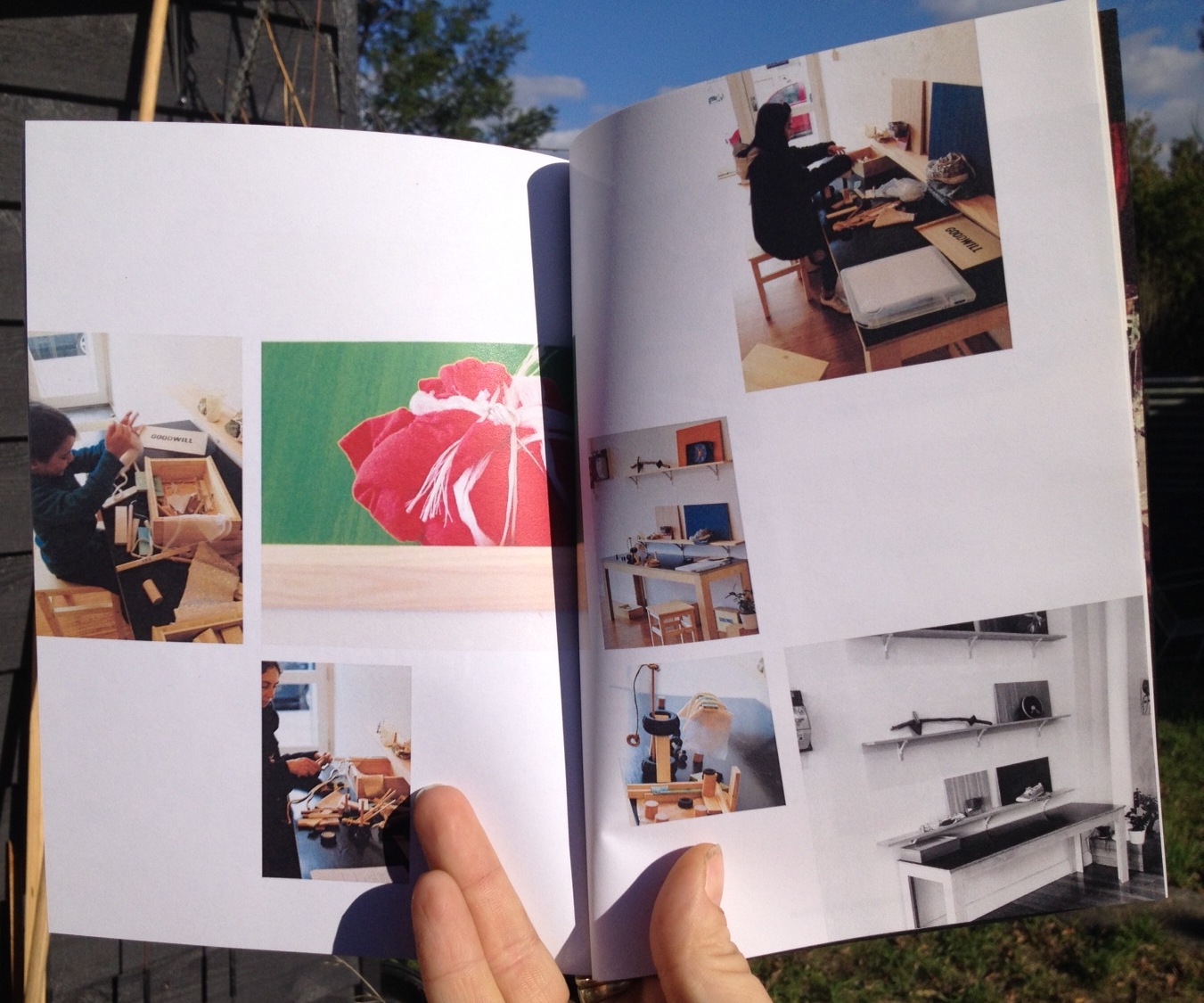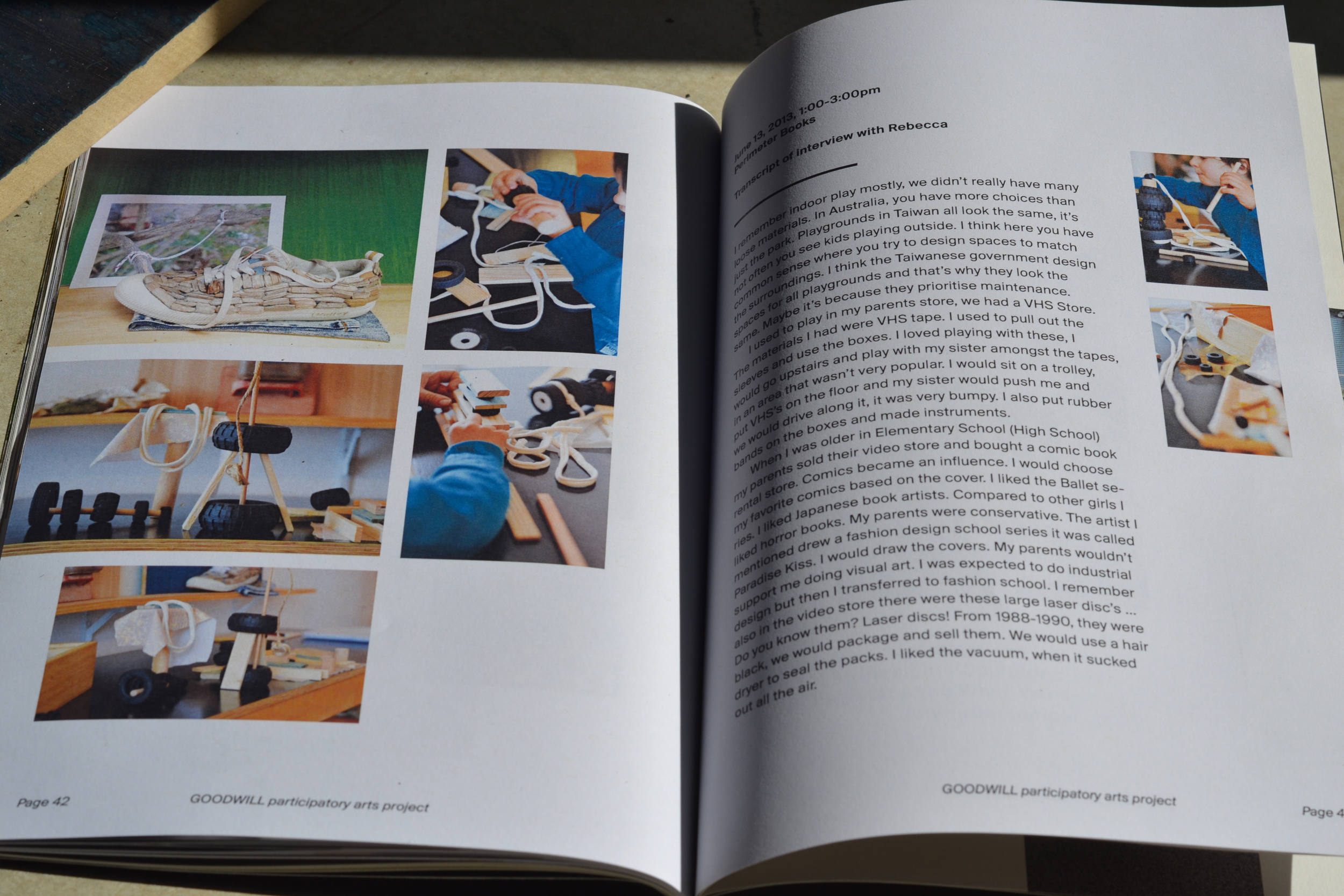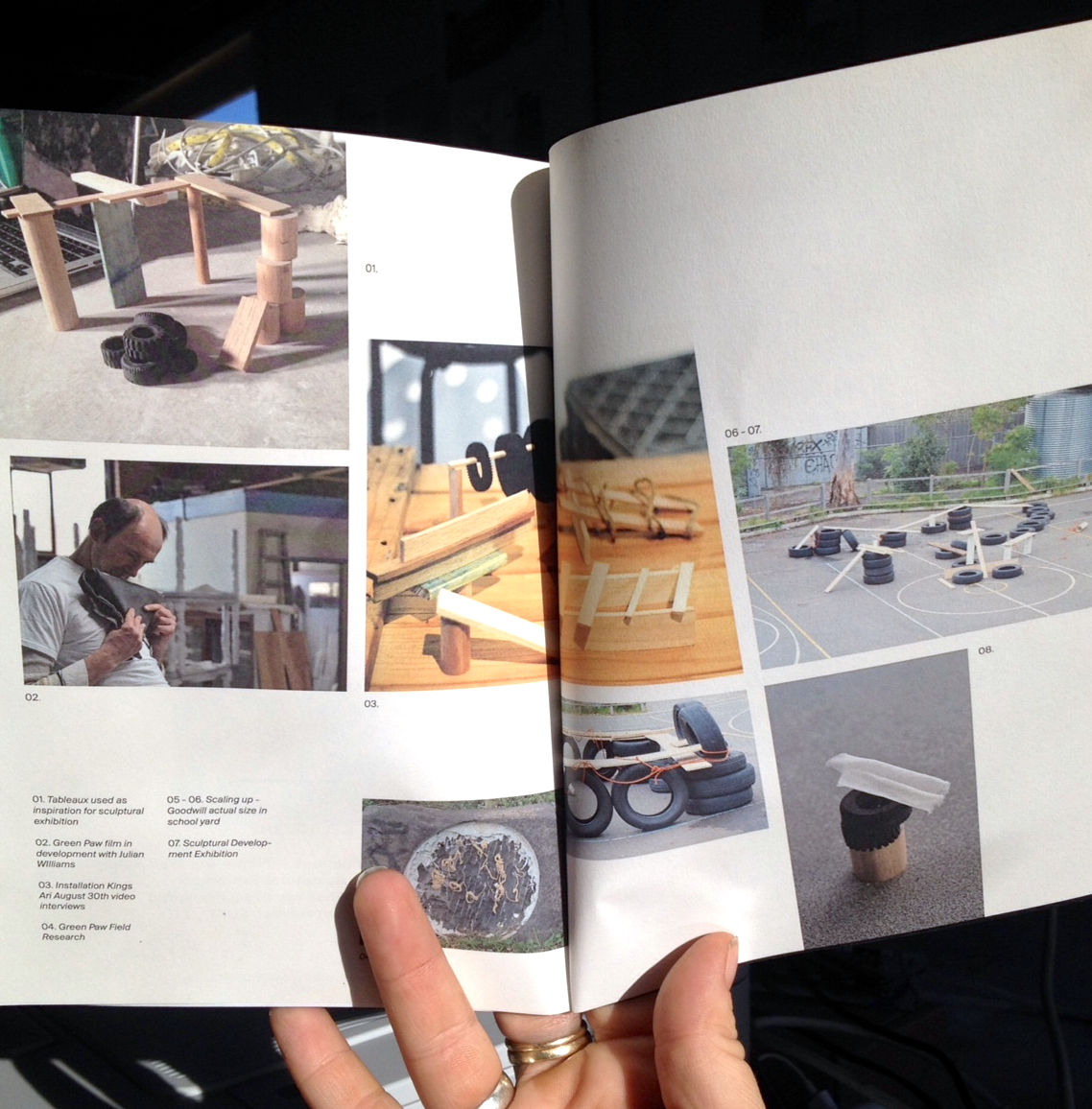Solo exhibtion and book launch, Top shelf Gallery, December 6th - 16th 2013. 42 page booklet designed by Ross Paxman with Introduction by Helen Hughes.
Goodwill Text Introduction by Helen Hughes
Kym Maxwell is an artist, teacher and thinker whose work within and across these distinct fields concerns notions of education, play and social spaces. More specifically, Maxwell’s work concerns the types of interpersonal relationships that are generated by the teacher–student dialogue, and the ideologically unfettered “play” of children.
She is interested in how alternative educational models (such as those proffered by the post-war Italian Reggio Emilia approach) and different types of objects and spaces (such as toolboxes and playgrounds) depart from conventional, top-down models of teaching and nurture new modes of learning instead.
Put more simply, Maxwell is concerned with the intersection between social relationships (student–teacher, student–student), and sculpture and installation (objects and environments used for learning). As such, the physical layout of a schoolroom — its desks, blackboards, and instructional posters — becomes a rich text that Maxwell can mine for invisible elements, like informational flows and interpersonal dynamics or hierarchies.
She continues these explorations in her latest project, GOODWILL, which has involved Maxwell creating a small sculptural “toolbox” and depositing it for general use in two education centres, a bookshop and a café over the course of the year 2013. This book documents and maps their use.
A theoretical toolbox for interpreting what follows, then, might include:
Jacques Ranciere’s account of the French school teacher Joseph Jacotot in The Ignorant Schoolmaster
Irit Rogoff’s e-flux essay ‘The Educational Turn’
Claire Bishop’s chapter, ‘Pedagogical Projects’ in Artificial Hells
Paul O’Neill’s Curating and the Education Turn
Kym Maxwell, ‘Experience and perceptions of “children’s research” and the educational turn’ in un Magazine, 7.1
Joseph Beuys’s idea for a free university
Annette Krauss’s Hidden Curriculum
Palle Nielsen’s The Model for a Qualitative Society
And it is to this broad and important dialogue on the intersection between education and contemporary art that Maxwell contributes, through both her written and artistic practices.
Helen Hughes, 2013.
MAXWELL’s statement
As an artist I have explored notions of play in public space and social constructivist theories through sculpture design. I have devised the GOODWILL project to challenge notions of spatial and social politics, the role of spectatorship and to question the importance and (decline) of kinesthetic play in our lives. The GOODWILL KIT is integral in this aim, as provocateur. It established the potential for the projects physical manifestation as a sculpture, but also as a means in which to engage in dialogue about the importance of un-fetted or unsupervised play and the subsequent building of narratives that ensues when we tinker, and open our minds.
The GOODWILL KIT was designed in March, by April and May it was used in 2 educational centers, an early childhood center and a primary school. In June I invited adults and families to engage in play and set up the kit at Small Block Café and Perimeter Books. Designed for individual use, to create miniature playscapes — the KIT resembles a child's wooden toy box full of tactile inanimate objects, such as lego-tyres, dowels, planks, lengths of string and fabric. Participants are asked to built play spaces that are open and inclusive and while doing this ponder on experiences of play, either current or as a child.
The design, concept and production of the GOODWILL KIT is based on David Cashman and Roger Faginʼs work from the late 70’s, the Islington School’s Environmental project (U.K) the photo documents students work at Laycock School, in Inslington. University lectures’ Fagin and Cashman agreed art students became insular and competitive, and devised an, artists-in-school to collaborate on outdoor play design. Their kit design (in which GOODWILL is based) helped open dialogue. By observing play with the introduction of new platforms, people’s perception of play was transformed and the yard acknowledged as creative site for social forms of learning.
Why focus on play? Roger Caillois’ description of the primal aspects of play as an: ‘...attempt to momentarily destroy the stability of perception and inflict a kind of voluptuous panic on an otherwise lucid mind... Surrendering to a kind of spasm, seizure or shock which destroys reality with sovereign brusqueness.’
In this instance, I employed the use of a toy kit to help define the importance of the unanticipated moments of which play is channeled through the arbitrary. Additionally the kinesthetic object tinkering developed a bi-product release of personal stories, narratives from the sub-conscious that reveal prior experimentation, trust and conflict. This unassuming openness or release became a focus for the project (and continued through the commissioning of private interviews, for film script development). That is, the GOODWILL kit’s intended use helped participants vocalize the socio-political, psycho-spatial conflicts that occur when ideals, desires, beliefs and rights are challenged, that, in some Freudian way manifest in our adult selves. Revisiting embedded sensual experiences of past and how they re-present the present was one ambition of the project. Somewhat this aligns with the avant-gardes’ destruction of meaning and value and their ushering in of art in the psychic arena: for example, Andre Breton’s declaration ‘the mind which plunges into Surrealism, relives with burning excitement the best part of childhood’.3The best part of childhood for participants often excluded those parts harder to acknowledge with strangers.
The project is informed by but not aligned to Joseph Beuys' Social Sculpture practice. Social Sculpture has been described as 'art's potential to transform society' (wikipedia, accessed 22nd of August): As an artwork it:
Includes human activity that strives to structure and shape society or the environment. The central idea of a social sculptor is an artist, who creates structures in society using language, thought, action, and object.
Beuys was confident in his utopian belief, the potential for art to bring about revolutionary change. The Goodwill project differs from this Utopian ideal looking to heighten personal action response acknowledging our propensity take ownership over things, ideas and success while being quick to disown failure. It seeks to use the smallest of objects as metaphor for the politics at play in public or near public space, as when objects free to use are introduced, negotiations take shape in light of learning of an objects capacity for construction, negotiations can alter when observed along with confidence. Particularly when children play with objects ownership becomes a natural part of play although there is no means in which they earn the right to own a free object, whereas adult play is more aware of the politics of ownership and manage their play with this in mind.
It may affect the behaviors of participants when play is documented (some after affects referenced in the 'extinction warrior' project). Rather the focus is on the dialogue between participant and artists creating an opportunity to discuss early experiences of unsupervised play, revealing in discussion the decisions we make and how we chose to interact. Predominately either aggressive or passive, passive- aggressively or violently interacting with each other, objects, space and danger It’s the personal politics (values, ethics, aesthetics) we bring to these environments that forms the interaction (outlet) of experiences bridging our understanding of ourselves (our becoming) through play.
(Roger Caillois, Man, Play and Games, Illinois: University of Illinois Press, 2001 [1958], p. 23.)
